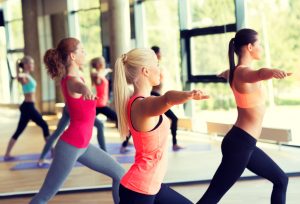They say it’s better to come overdressed than underdressed. Either way, you stand out for the wrong reasons. Showing up wearing the wrong attire for an event with a specified dress code is like showing up to the Met Gala in a little black dress when the theme is colors of the rainbow: you will stand out regardless, and it can be pretty embarrassing.
But understanding the different dress codes can be confusing, especially for those who aren’t adept in fashion. How does one differentiate white tie from black tie dresses? What is a beach formal attire? And what are the do’s and don’ts of dressing for certain occasions? Here’s what women need to know.
White Tie
 Occasions with a “white tie” dress code are reserved for the most formal events. As such you can never be too overdressed and made up. Wear a formal, floor-length evening gown with matching shoes and tasteful jewelry. Don’t be afraid to hire the services of a hair and makeup artist even if you’re just a guest in the event, as your updo and makeup must be on the same level as your attire. You can pair your gown with opera-length gloves.
Occasions with a “white tie” dress code are reserved for the most formal events. As such you can never be too overdressed and made up. Wear a formal, floor-length evening gown with matching shoes and tasteful jewelry. Don’t be afraid to hire the services of a hair and makeup artist even if you’re just a guest in the event, as your updo and makeup must be on the same level as your attire. You can pair your gown with opera-length gloves.
This dress code is often used for formal parties, corporate events, state dinners, operas, and weddings. If there is no specified color, choose any color that flatters your skin tone. If you’re attending a wedding, do not wear white as it’s the bride’s color and you could risk upsetting the bride for upstaging her.
Black Tie
 Black tie affairs are less formal than white tie, but it’s still up there in terms of formality and etiquette. This is usually the dress code for evening affairs like dinner parties, fundraisers, and weddings. You can still wear a floor-length evening gown, but you also have three other options, depending on the event.
Black tie affairs are less formal than white tie, but it’s still up there in terms of formality and etiquette. This is usually the dress code for evening affairs like dinner parties, fundraisers, and weddings. You can still wear a floor-length evening gown, but you also have three other options, depending on the event.
The first is a knee-length cocktail dress with matching heels. The second is your fanciest little black dress (a simple black shift dress will not do). The third is a top and blouse pair – make sure your skirt is at least knee length and the outfit is still formal.
Creative Black Tie
 Creative black ties are still formal, but you must not look boring and wear something fashionable or trendy. These are for galas, auctions, dinners, and other occasions that are formal but have a fun atmosphere.
Creative black ties are still formal, but you must not look boring and wear something fashionable or trendy. These are for galas, auctions, dinners, and other occasions that are formal but have a fun atmosphere.
You can wear everything mentioned in the black tie dress code, but make sure it looks lively, unique, or shows off your personality. Women can also wear suits tailored for women, tuxedo pants with a formal top, pantsuits, or a jumpsuit.
Black Tie Optional
 Less formal than black tie, used for galas, auctions, weddings, and dinners. Women have the option of wearing long gowns, cocktail dresses, separate tops and skirts, or attires with pants. Accessorize with gloves, clutches, and jewelry. Heavy to light makeup and hairstyling is recommended, but professional styling is not necessary.
Less formal than black tie, used for galas, auctions, weddings, and dinners. Women have the option of wearing long gowns, cocktail dresses, separate tops and skirts, or attires with pants. Accessorize with gloves, clutches, and jewelry. Heavy to light makeup and hairstyling is recommended, but professional styling is not necessary.
Semi-Formal
 Ultimately, what you wear has to depend on the theme, venue, and time of the event. Women can wear a knee-length cocktail dress, little black dress, a dressy skirt and top, or slacks and a dressy blouse. Makeup and hairstyling are recommended, but not too flashy.
Ultimately, what you wear has to depend on the theme, venue, and time of the event. Women can wear a knee-length cocktail dress, little black dress, a dressy skirt and top, or slacks and a dressy blouse. Makeup and hairstyling are recommended, but not too flashy.
This is the middle ground between formal and casual. Think of it this way: you want to look too formal that you don’t look like you’re just going to the mall, but you don’t want to look too formal that you look like a debutante. Semi-formal dress codes are often used for less formal lunches and dinners, weddings, and other events.
Beach Formal
 You’ll only ever hear “beach formal” on two occasions: beach weddings and outdoor formal parties with a tropical theme. It’s somewhere within the leagues of black tie and semi-formal, but with a twist: whatever you wear, make sure it’s something you can easily walk around in when on the beach but still looks elegant and formal enough not to cheapen the event.
You’ll only ever hear “beach formal” on two occasions: beach weddings and outdoor formal parties with a tropical theme. It’s somewhere within the leagues of black tie and semi-formal, but with a twist: whatever you wear, make sure it’s something you can easily walk around in when on the beach but still looks elegant and formal enough not to cheapen the event.
For women this means stilettos and gowns with long trains are out of the question because it can be difficult to walk on sand. Gowns and cocktail dresses with light and flowy fabrics are a good choice, as well as jumpsuits. Skip your heels and wear wedges or flat sandals, but do not wear flip-flops. Depending on the weather, you can also wear a shawl or jacket. Avoid heavy makeup especially if you’re prone to sweating and aren’t wearing sweatproof makeup.
Smart Casual
 Also known as business casual or corporate casual, this is usually reserved for offices and corporate events that don’t require employees to dress in corporate attire. Think casual, but work-appropriate.
Also known as business casual or corporate casual, this is usually reserved for offices and corporate events that don’t require employees to dress in corporate attire. Think casual, but work-appropriate.
Ideally, men and women should look smart and sharp. For women, this can be a pencil skirt or dress pants paired with a conservative blouse or collared button-down top. Wear sensible closed-toed shoes; if you’re wearing heels, keep it to a minimum of two inches. Wear light makeup and hair can either be loose or tied, but make sure it’s tidy and away from your face.
Dressy Casual
 Just because an event tells you an event is casual does not mean you can show up in shorts and an old tank top. If you’re going to church, a dinner in someone else’s home, or are invited to a casual party, it’s important to look neat while still showing some of your personality.
Just because an event tells you an event is casual does not mean you can show up in shorts and an old tank top. If you’re going to church, a dinner in someone else’s home, or are invited to a casual party, it’s important to look neat while still showing some of your personality.
For women, avoid wearing denim shorts, tennis shoes, tank tops, or regular t-shirts. Opt for at least knee-length pants or a skirt paired with a simple blouse or top. You can also wear a sundress, but if you’re going to church, make sure it has sleeves. You can wear flats and a few small accessories. Makeup and hairstyling are not necessary, but make sure your face is clean.






